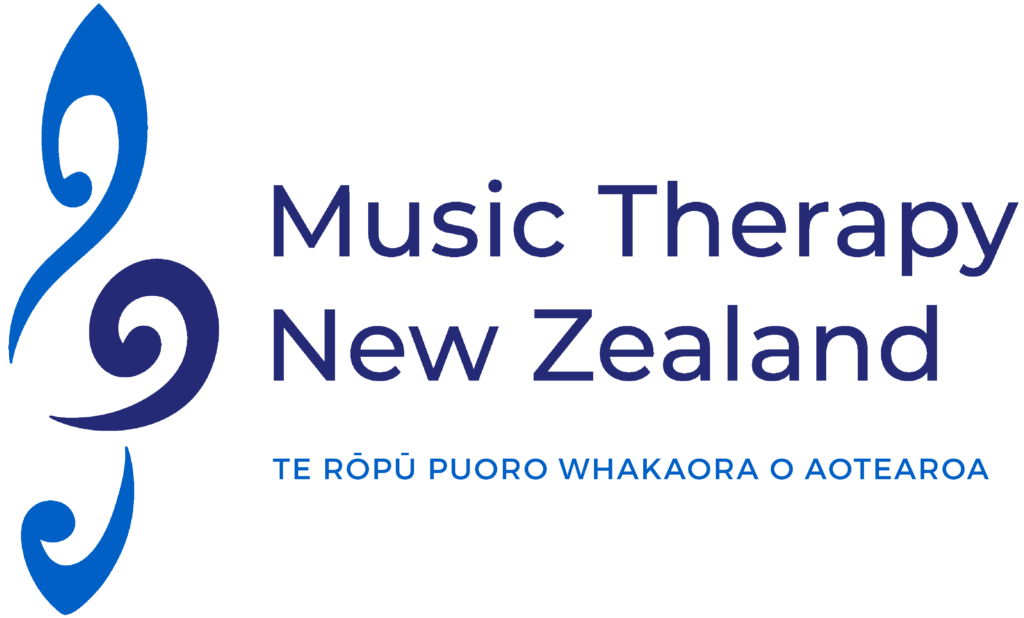Cornelius, S. & Natvig, M. (2016). Music: A Social Experience. Abingdon, UK: Routledge.
Reviewer:
Fiona Hearn, MMusTher, BMus, NZ RMTh
Wellington Early Intervention Trust and Private Practice
Music: A Social Experience offers an introduction to the social role of music throughout history and culture. It is primarily written as a course text for university students taking a paper in music appreciation. The authors are both American university music professors specialising in music history and music from different cultures,and have written other books on similar topics including Teaching Music History (Natvig, 2002) and Music of the Civil War Era (Cornelius, 2004). The authors aim to equip students with the skills to listen to and think critically about a variety of musical styles and promote cultural understanding through musical knowledge. Personally, as a music therapist working with families from a range of different cultural backgrounds and with social goals often a focus, I hoped this book would help inform my understanding of music’s cultural and social role.
The book offers a basic introduction to the standard Western concert repertoire, then links it to a wider range of music from a range of cultures, genres and time periods. It is organised into four parts: (1) “Music Fundamentals” introduces the power of music and how we perceive music in its cultural and historical context; (2) “Music Identities” focuses on how music expresses individual and group identities and how music shapes social expectations of identity, and covers chapters on music’s connection to ethnicities, gender and spirituality; (3) “Musical Intersections” explores how music crosses into the social realms of politics, conflict and love: and (4) “Musical Narratives” highlights the musical genres of theatre, film, dance, and the concert experience.
I found the book easy to read and it provided numerous listening examples,complete with timed analytical comments which helped to illustrate the text. There were profiles on different musicians, composers and musical styles scattered throughout the book,written in a succinct and lively way. It was illustrated with photos and drawings which brought visual interest to the text. There were also questions, activities and assignments at the end of each section, which students might be interested in exploring. The main strength of the book was that it provided a good introductory exploration of different cultural musical styles and genres and how they link to Western music. Through reading it, I gained a better understanding of many cultural musical forms that I had previous little knowledge of, such as Japanese shakuhachi music, West African jalolu musicians, Balanese gamelan, the Samā ceremony of the Mevlei Sufi Order, and Bulgarian folk music, to name a few.
At times, I found the author’s views quite subjective, especially within the chapter on gender, which did not allow for wider and more objective perspectives. As it is written for university students with an elementary understanding of music, the book includes extensive basic music theory and history. I thought the book could have been improved by adding a final concluding chapter, as I felt it ended rather abruptly after discussing different types of performance. There were also a few formatting issues –for example, the book was bound incorrectly, starting at chapter 8, and contained a few spelling and typing errors. Hopefully in future print runs they will correct the binding issue. A multimedia 4 CD set can be purchased separately, and contains over 60 recordings and other information. As an alternative, you can purchase an access code which allows you to access the resources online through Pearson’s My Search Lab1. The book states that as well as the listening examples, the online resources include video examples, short texts on special topics and sample recordings and notation to illustrate basic concepts in music. These resources were not available for review,so I cannot discuss their quality.
This book would be useful for music therapy students and music therapists who want to work in a culture-centred way. It also has a role in helping us more fully understand music’s social role throughout history and culture, which is important in our work as music therapists. It provides a context to experience and explore music’s social and cultural impact in a variety of ways through text, illustrations, listening examples, questions, activities and assignments. It also offers good examples of how to analyse and describe musical works which can be helpful when analysing our own musical interactions within therapy sessions. I would recommend the book to anyone who is looking for an easy-to-read book and is interested in understanding a wider range of cultural musical styles and how music expresses and shapes identities.
References: See full journal.
Download Full Journal


